Read in English / 阅读语言 ไทย
![]() 简体中文
简体中文
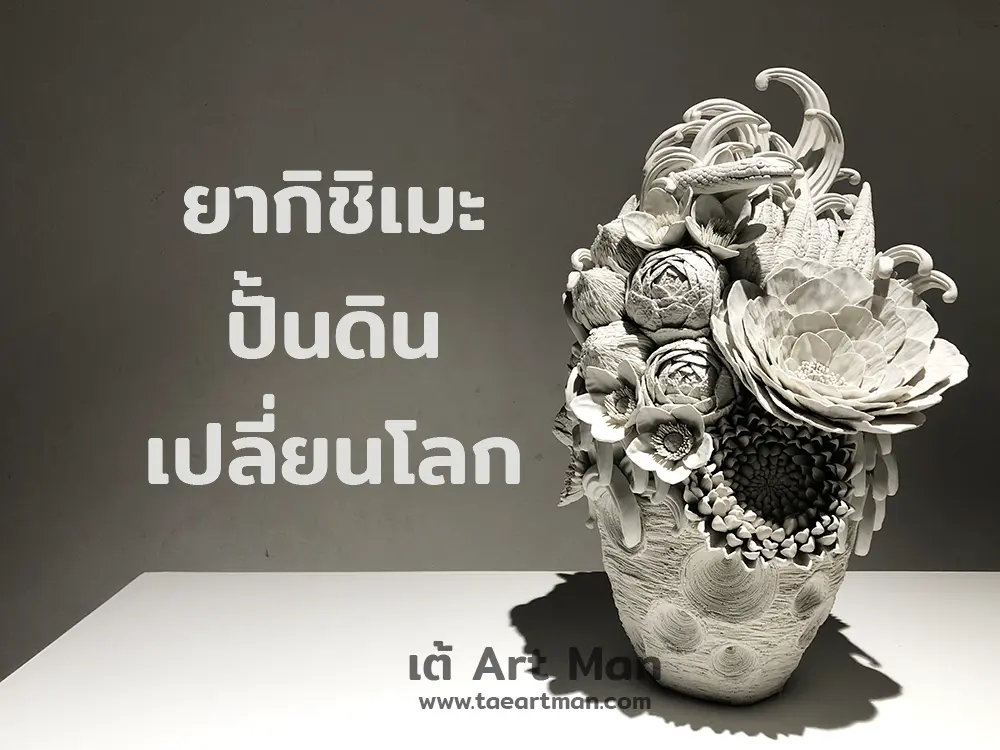
“Yakishime: Earth Metamorphosis ” is an exhibition that takes us on a journey to explore various aspects of Japanese culture through “yakishime,” an ancient pottery technique that gained popularity over 800 years ago. This technique involves firing unglazed pottery at high temperatures of around 1200 – 1300 degrees Celsius, causing the clay to become dense and tightly bonded, resulting in a phenomenon known as “yakishime-ru” or the transformation into glass-like texture.
This exhibition presents over 90 pieces of fired clay pottery from different eras, offering a comprehensive view of the evolutionary development of yakishime pottery art that reflects various aspects of Japanese culture. The exhibition is divided into three sections, each showcasing works from different time periods, starting from the earliest era to contemporary pieces. This arrangement allows visitors to embark on a journey to explore the charm of artworks from each historical period clearly and distinctly.
Introduction: The Genesis of Yakishime Pottery
Before entering the three exhibition sections, this presentation showcases a collection of yakishime pottery artworks dating back to the early periods, starting in the 5th century, up until the Edo period (18th century). It includes a video demonstration of the process of creating yakishime pottery. Additionally, there are notable works, such as the Sueki pottery from the Heian period (794-1185), believed to be the origins of yakishime pottery, for viewers to appreciate.
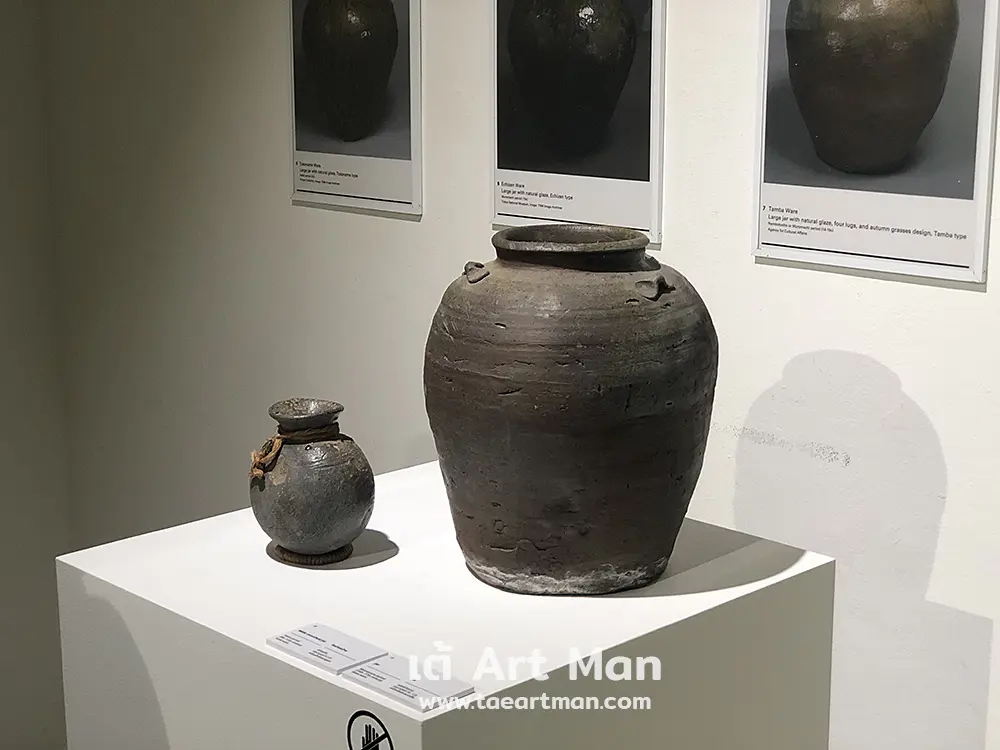
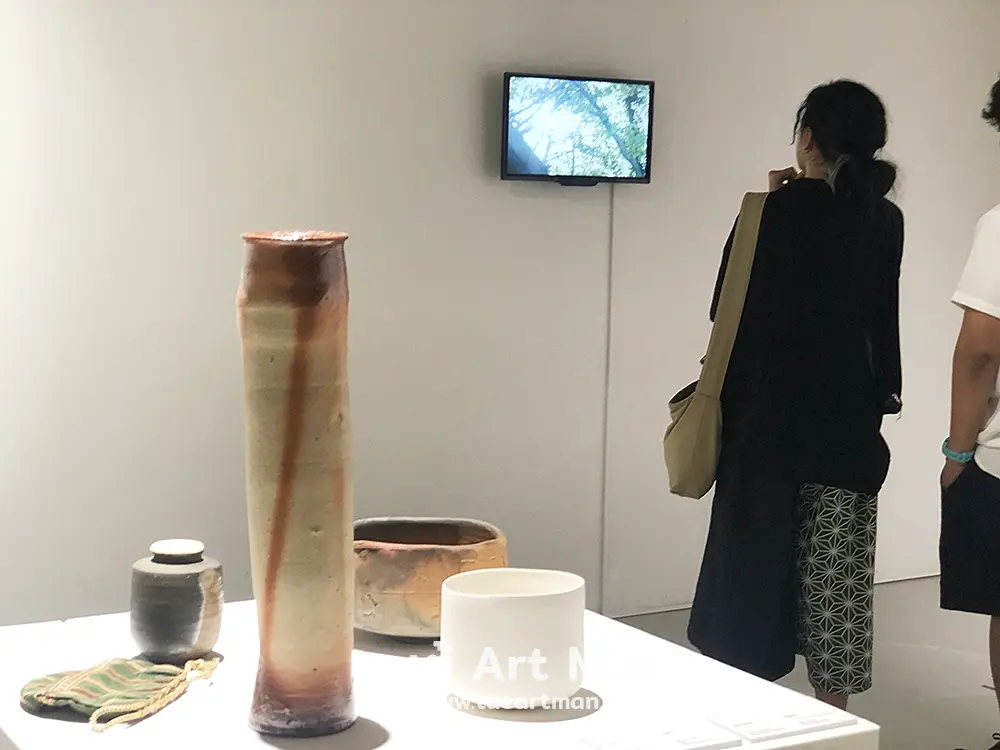
Section 1 : Yakishime as Tea Wares
During the late of 12th century, the production of yakishime pottery began to emerge in various towns and regions, including Bizen in Okayama, Tono in Iwate, Shigaraki in Shiga, and other pottery centers throughout Japan.
With its growing popularity, yakishime pottery are household items across the country. This trend continued until the birth of the tea ceremony during the Muromachi period (1392-1573). Those who sought the genuine essence of tea, in pursuit of the natural beauty of the world, found solace through the aesthetic concept of “wabi-sabi” (a philosophy centered on finding beauty in imperfection and embracing the natural cycle of growth and decay). People were captivated by the authenticity of nature and the tactile sensation of yakishime pottery, which was unglazed and retained its natural form.
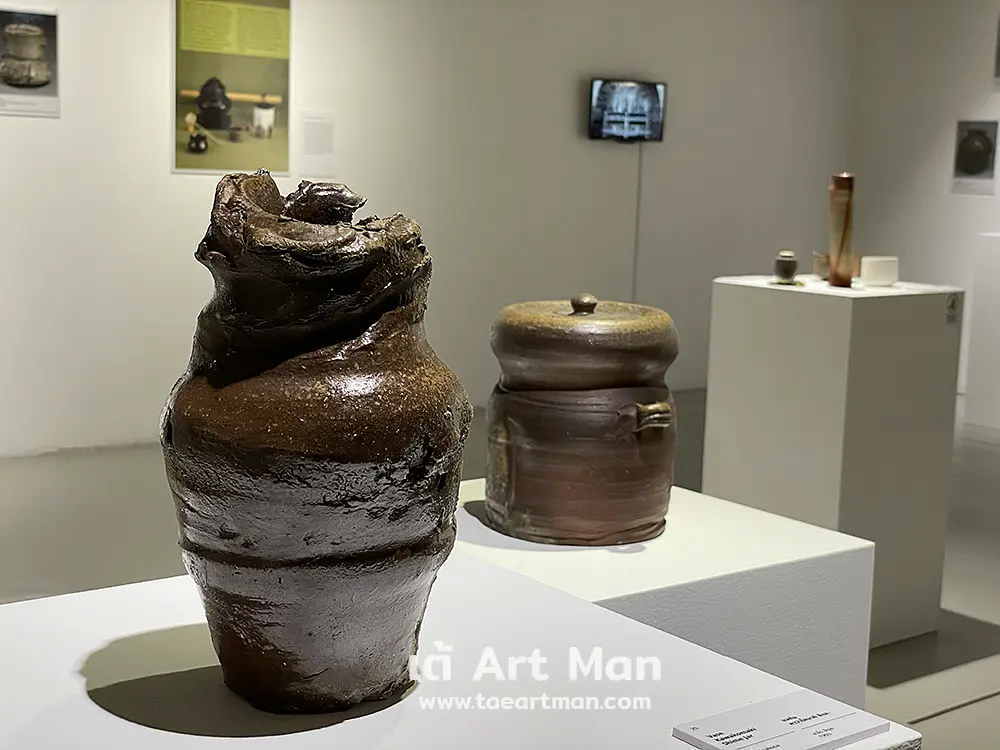
During the Momoyama period (1568-1615), yakishime pottery was elevated to the status of tea utensils in the tea ceremony. Even Sen no Rikyū, often referred to as the “Father of the Tea Ceremony,” and Toyotomi Hideyoshi, the paramount ruler who successfully unified Japan, admired the beauty of yakishime pottery. As a result, there was an increase in the production of yakishime-style vessels during that era, supported by cultural leaders and governing authorities.
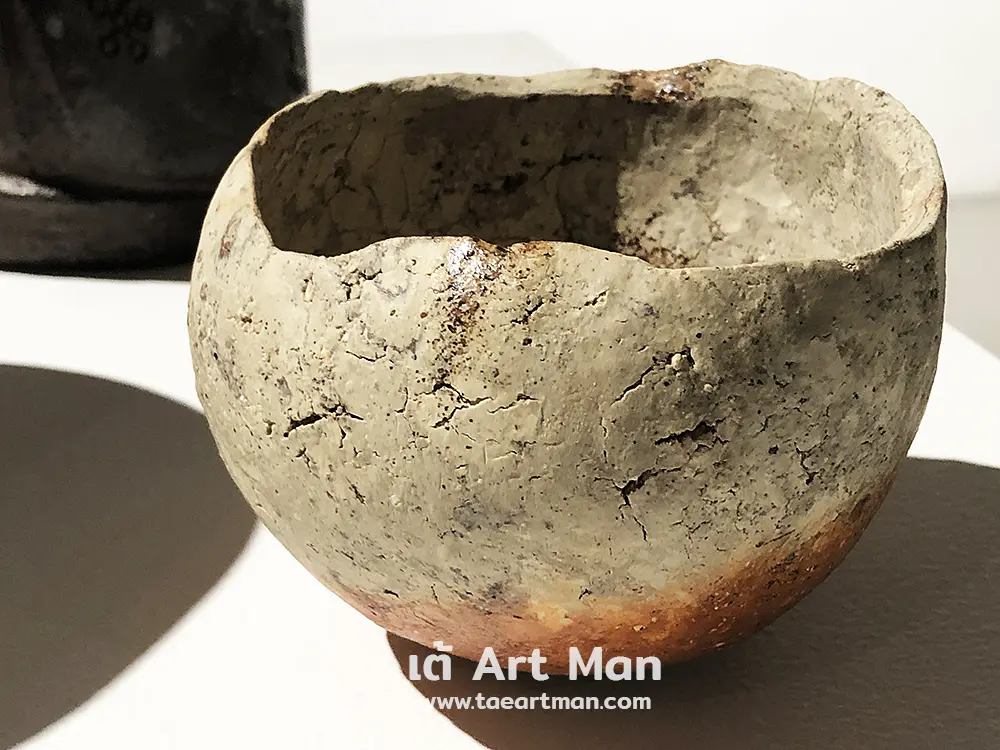
In this section of the exhibition, tea bowls along with various utensils are presented, allowing visitors to witness the portrayal of a traditional tea preparation room. This presentation is juxtaposed with the display of yakishime pottery pieces that serve as the starting point for the creation of tea bowls, dating back to the Momoyama period, as well as contemporary tea bowls crafted by contemporary artists.

Section 2: Washoku and Yakishime
Washoku, or traditional Japanese cuisine, was registered as an intangible cultural heritage by UNESCO in December 2013. In the exhibition, UNESCO’s statement regarding washoku was highlighted, stating that another remarkable aspect of washoku is the respect shown for the beauty of nature and the changing of the seasons, which is discernible on the dining table.
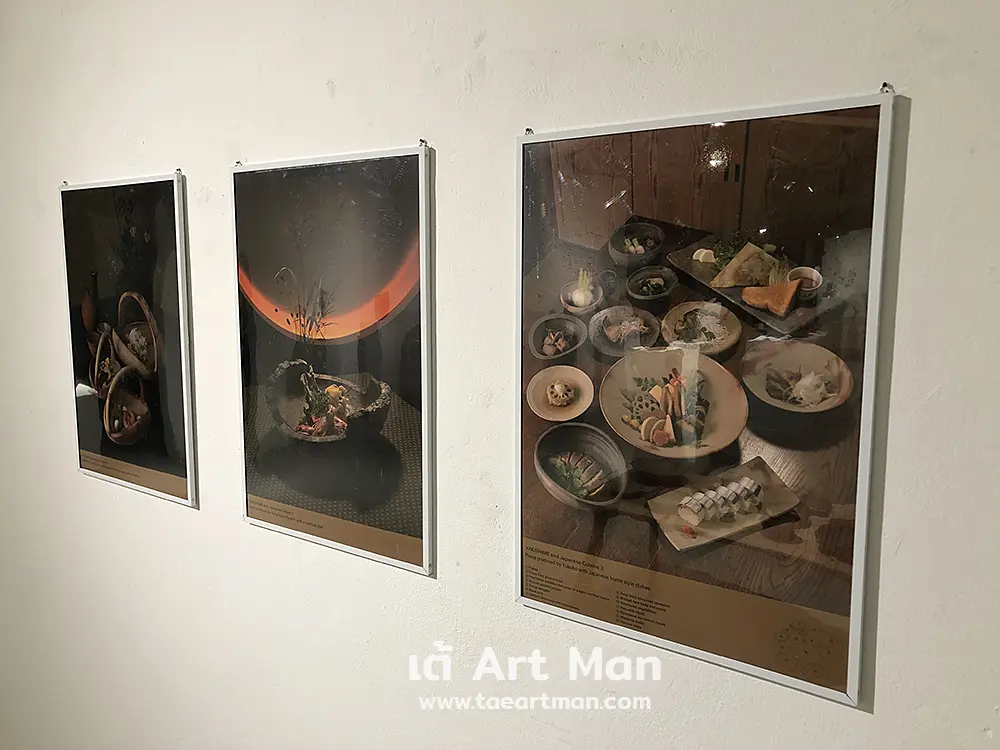
Certainly, the use of vessels that reflect the changing seasons is undoubtedly more than just serving containers. This exhibition presents yakishime pottery as fundamental vessels that mirror the spirit of washoku culinary culture, representing the essence of a culture that values the connection between food and the changing natural world.
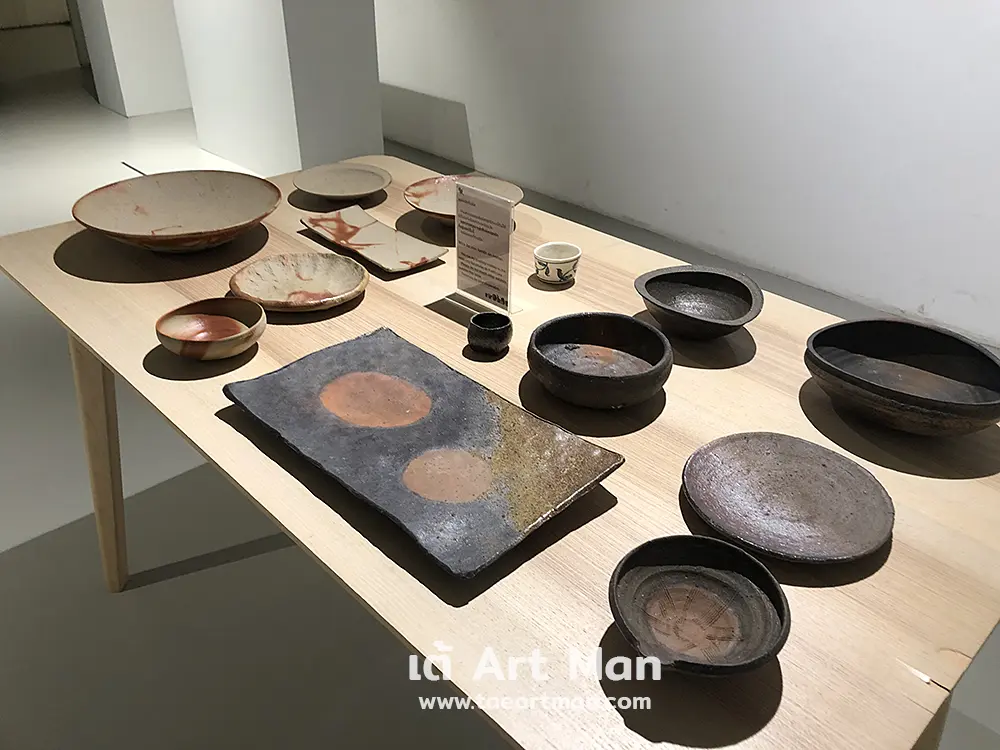

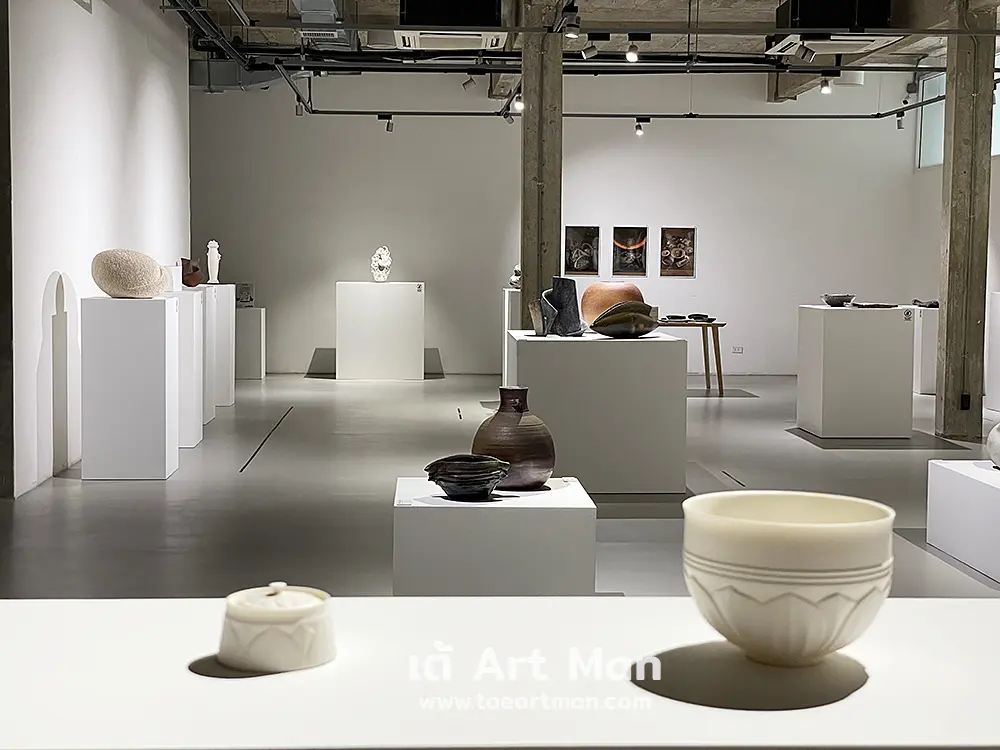
Section 3: Yakishime as Objets d’art
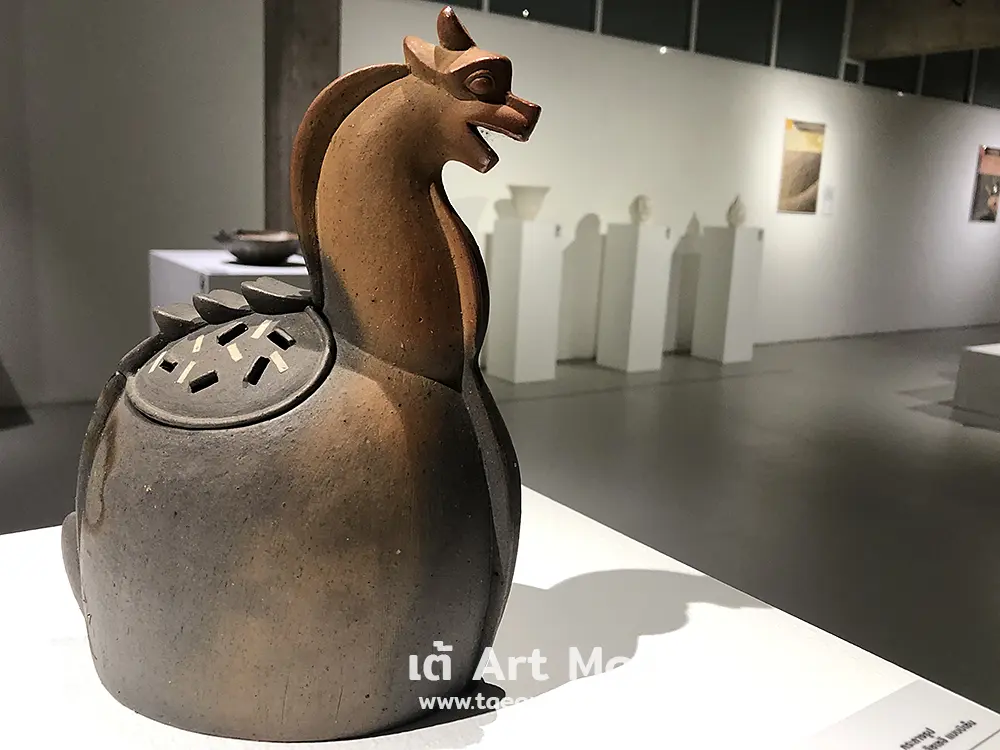
In the realm of art, when mediums, materials, and various concepts are initially created for utilitarian purposes, they can eventually evolve into forms of art for art’s sake. Similarly, yakishime pottery is also undergoing a transformation, moving towards a new direction as objets d’art that are free from functional limitations. While doing so, it continues to develop as both everyday utensils and tea bowls, retaining its significance as the origin and essential identity of yakishime pottery.
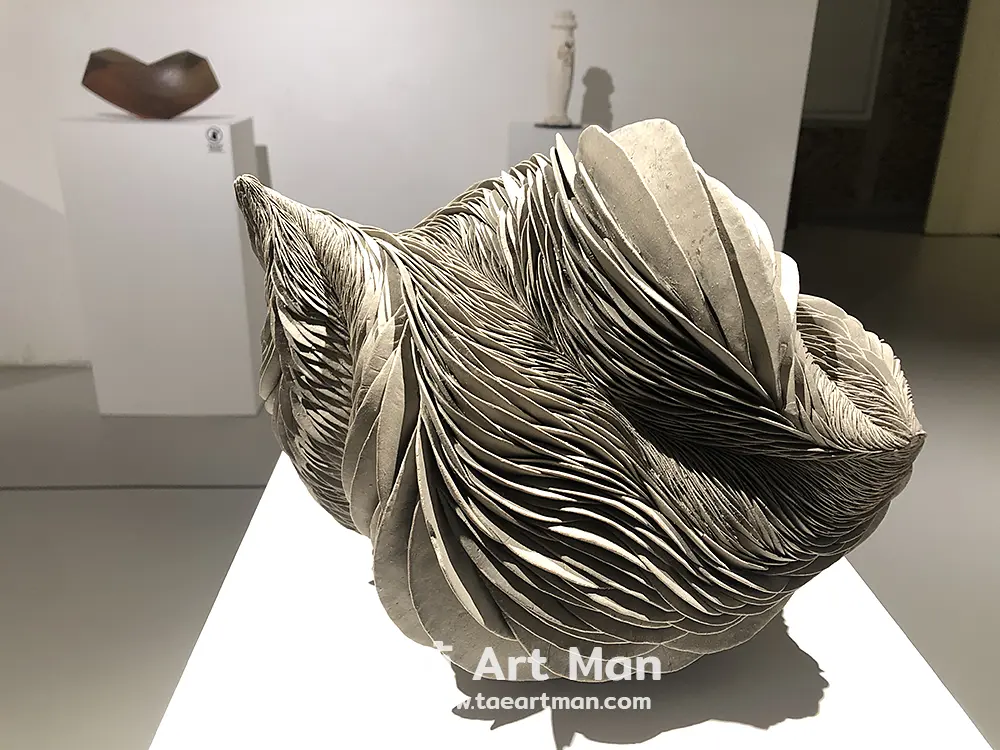
This section of the exhibition presents works by a group of artists who have developed innovative ideas for creating yakishime pottery in artistic forms. These ideas have emerged relatively recently, with most of the artworks produced around 2014-2015. The pieces come in various forms and sizes, each maintaining the distinctiveness of surfaces unglazed, allowing the artist-conceived patterns and lines to become the raw, exposed essence of the artwork. The unadorned, naked appearance of these creations captivates viewers’ attention, unobstructed by any barrier to the eyes of art enthusiasts.
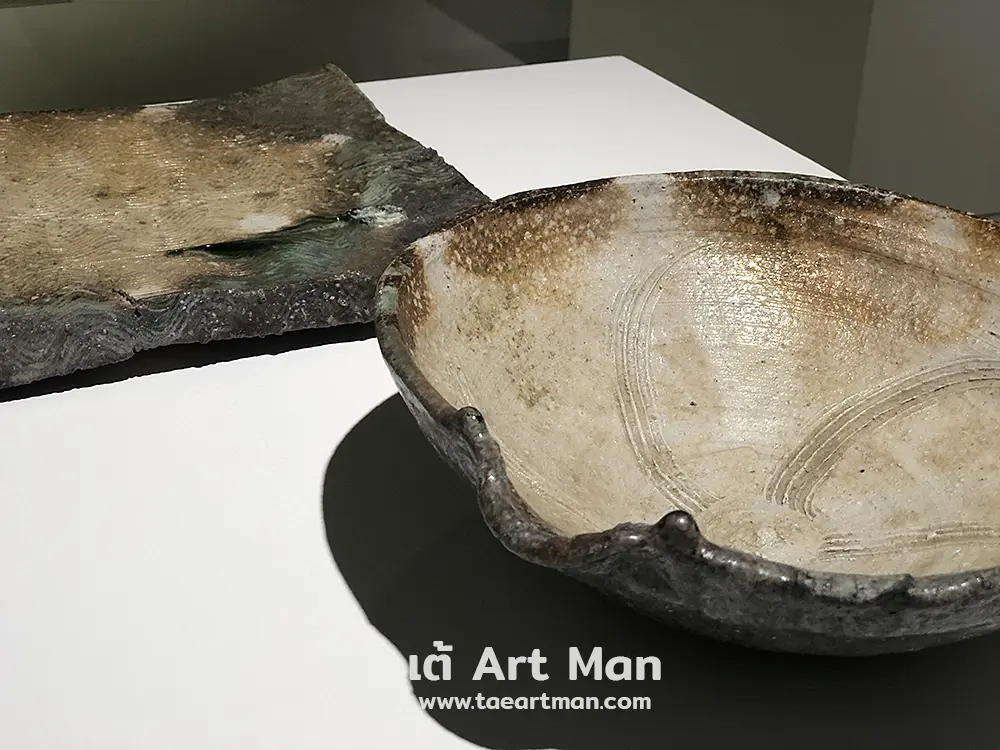
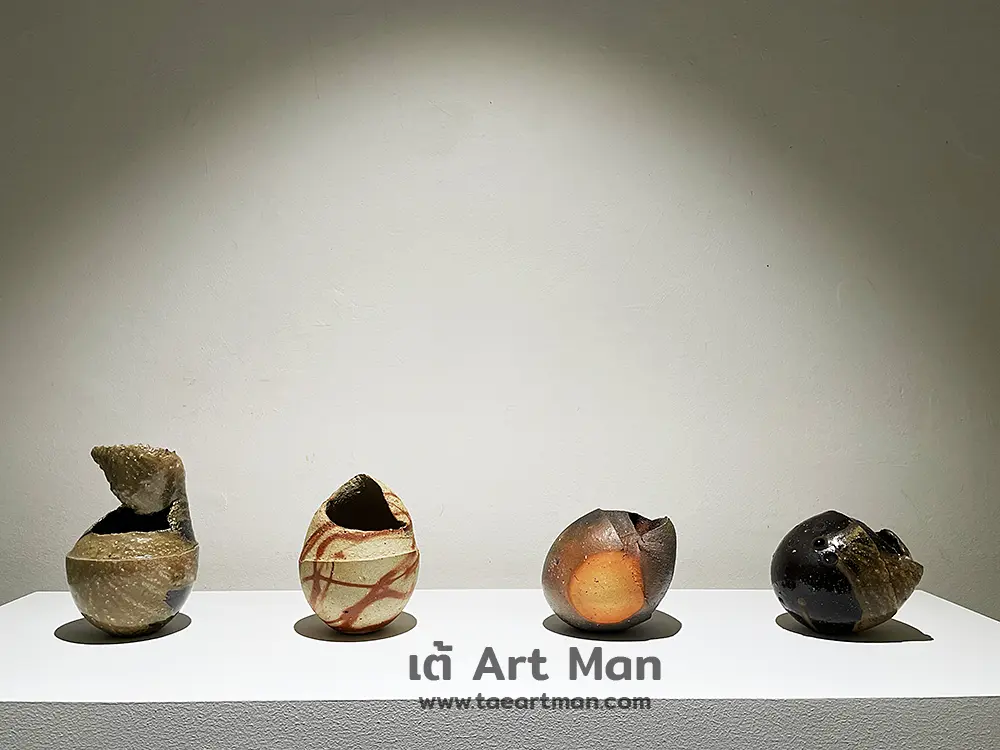
Yakishime: Earth Metamorphosis Visiting
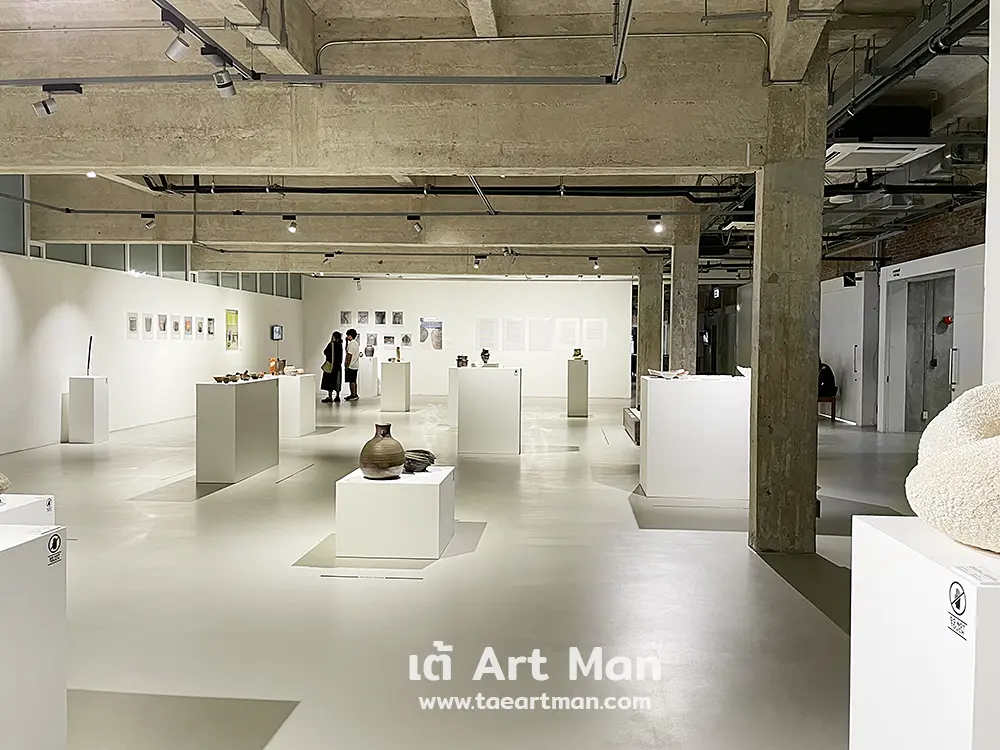
“Yakishime: Earth Metamorphosis” is a traveling exhibition organized by the Japan Foundation, which has been showcased around the world. Today, it has arrived in Thailand for viewing, and admission is free. The event is divided into two segments:
- In Bangkok: From today until September 26, 2566 (2023), from 10:00 AM to 7:00 PM, at Room 5, 2nd Floor, Bangkok Art and Culture Center (closed every Monday and public holidays).
- In Khon Kaen: At the Faculty of Fine and Applied Arts Museum, Khon Kaen University, from October 7 to November 26, 2566 (2023), from 10:00 AM to 5:00 PM (closed every Monday).
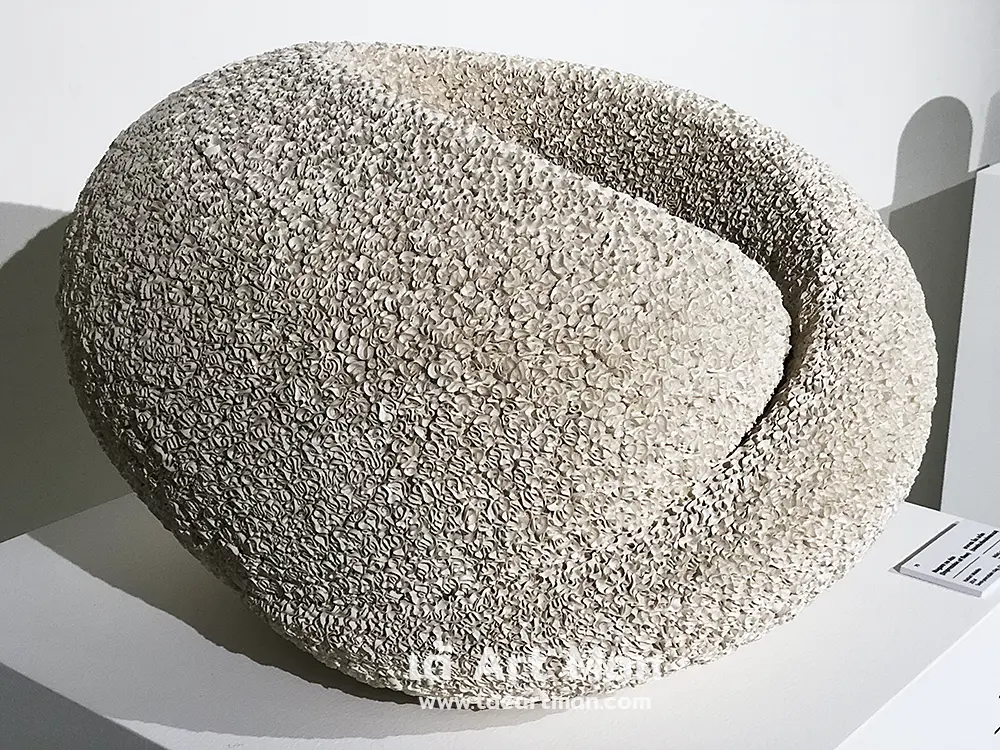
For those who have visited, I recommend stopping by “Golden Coffee” café located at Rattanakosin Exhibition Hall (across the street). It’s delicious.
Thank you for following and watching. You might be interested in exploring the art of finding nature in life.
Text: เต้ Art Man
Phot: เต้ Art Man / Tooh Athit